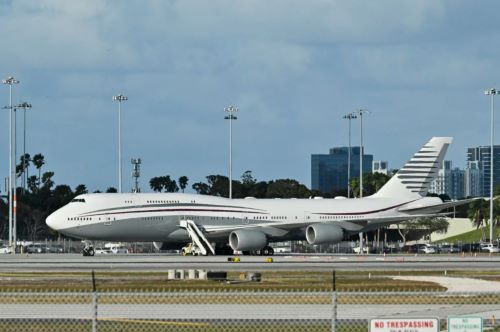

Funds meant to support the integrity of America’s nuclear infrastructure have instead gone toward polishing an asset linked to one of the most polarizing political figures in modern history.

By Matthew A. McIntosh
Public Historian
Brewminate
An Unexpected Line Item with Heavy Implications
In the sprawling bureaucracy of the U.S. Department of Defense, money moves through channels that often appear opaque even to seasoned insiders. But every so often, a line item emerges that raises more than procedural eyebrows. It raises constitutional questions, national security concerns, and the age-old specter of political entitlement.
In late spring, investigative journalists unearthed documents showing that a portion of funds originally earmarked for nuclear readiness and weapons infrastructure had been reallocated to refurbish the jet. The aircraft, a modified Boeing 757 registered to a Qatari holding company with ties to Trump-affiliated ventures, had reportedly been grounded for months in Europe awaiting a full interior and avionics overhaul.
The funding redirection, which amounted to approximately $934 million, was signed off by a mid-level civilian administrator under what is now being scrutinized as a “dual-use modernization clause.” This clause, typically intended for emergency procurement related to defense logistics, was invoked to justify the transfer despite no explicit military justification for the aircraft in question.
The Jet in Question
Its scheduled refurbishment included luxury modifications, encrypted communications systems, and hardened cockpit upgrades. While some of these features could arguably have dual-use potential, they fall far outside the scope of normal Pentagon refurbishment projects.
What troubles many observers is not just the use of public funds for an asset still not officially marked as public, but the particular origin of those funds.
Sacrificing Nuclear Readiness
The diverted money came from a discretionary line tied to the Sentinel intercontinental ballistic missile program. The program ensures the safety and reliability of America’s aging nuclear arsenal in the absence of actual testing.
For years, experts have warned of delayed maintenance and underfunding in this area. Components from the Cold War era require constant technical oversight. Any reduction in support is not symbolic. It is material and consequential.
“I don’t think that [Defense] Secretary Hegseth has a knowledge base on these issues, nor do I think that the people that he’s brought in under him have any experience with managing these nuclear systems,” Jon Wolfsthal, a nuclear expert and director of global risk at the Federation of American Scientists, said in an interview with the Bulletin of the Atomic Scientists. “And the White House is not exercising control in that area.”
The Qatar Connection
The Qatari link adds another layer of complication. While Qatar is a U.S. ally, it is also home to one of the most labyrinthine networks of private finance and state-sponsored business holdings in the Gulf. The Trump Organization has long had commercial interests in the region, many of which remain under the radar due to the private nature of its licensing deals.
Multiple aviation watchdogs flagged the aircraft’s registration as unusual, pointing to its listing under a shell entity owned by a Qatari media conglomerate. Though officially independent, that conglomerate receives significant subsidies from the Qatari government.
Legal Gray Zones and National Precedent
Legally, the diversion may hinge on the wording of the modernization clause used to authorize the expense. If it can be shown that the jet could serve a “strategic advisory function” or “support roles in defense-aligned diplomacy,” the decision might fall within an extremely generous interpretation of existing policy.
That interpretation, however, stretches credulity for most experts in government finance.
The broader danger lies not in this specific instance, but in the precedent it sets. If public defense funds can be channeled into private or politically-adjacent ventures under the vague label of modernization, there is little to stop future administrations from bending similar rules. The line between strategic necessity and political convenience begins to blur, and public trust erodes with it.
A Question of Priorities
The refurbishment is expected to be completed by October, just ahead of the most intense stretch of the 2026 midterm campaign cycle. Whether the aircraft will be used primarily for travel, political rallies, or foreign donor engagement is not publicly known.
What is known is this: funds meant to support the integrity of America’s nuclear infrastructure have instead gone toward polishing an asset linked to one of the most polarizing political figures in modern history.
It may be legal. It may even be technically defensible. But for many, it feels like a betrayal of priorities.
In a time when threats to global stability continue to multiply, when arms control agreements falter and rival states invest heavily in modernization, America has quietly chosen to redirect part of its deterrence budget toward luxury aviation. Some may call it a line item. Others might call it a warning.
Originally published by Brewminate, 08.05.2025, under the terms of a Creative Commons Attribution-NonCommercial-NoDerivatives 4.0 International license.


